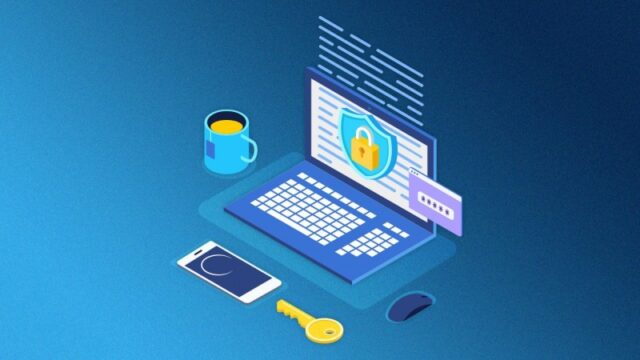Data Security: In our hyper-connected world, data is the new currency. From personal information like social security numbers to financial records and intellectual property, the information we create and store is a treasure trove for both legitimate purposes and malicious actors.
This guide delves into the ever-evolving landscape of data security, equipping you with the knowledge and strategies to protect your data in both the online and offline realms.
Understanding the Threats: A Multi-Faceted Battleground
While most people recognize the dangers of online threats like phishing scams and malware, offline security is often overlooked. Data breaches can occur through physical theft, unauthorized access to paper documents, or even lost devices containing sensitive information. To effectively safeguard your data, we must first understand the battleground:
-
Online Threats: Phishing scams, malware attacks, data breaches, and identity theft are just some of the dangers lurking in the digital wilderness. Hackers employ sophisticated techniques to trick users into revealing passwords or downloading malicious software, potentially compromising entire systems.
-
Offline Threats: Physical theft of devices or documents, unauthorized access to sensitive areas, and even human error like accidentally losing a USB drive can all expose your data. Traditional methods of information storage, while seemingly innocuous, require robust security measures.
Related Post: Adding Your Address to Google Maps: A Comprehensive Guide
Building Your Defenses: A Multi-Layered Approach
Now that we’ve identified the threats, let’s explore a comprehensive approach to data security:
Online Security Fortifications:
-
Fortress Passwords: The foundation of online security lies in strong passwords. Use complex combinations of letters, numbers, and symbols, making them difficult to crack. Consider a password manager to generate and securely store unique passwords for every account.
-
Two-Factor Authentication (2FA): Think of 2FA as a moat around your castle. It adds an extra layer of security by requiring a one-time code, typically sent via SMS or an authentication app, in addition to your password during login.
-
Digital Armor: Updated Software: Outdated software is like a castle with crumbling defenses. Regularly update your operating system, antivirus software, web browsers, and applications to patch security vulnerabilities and stay ahead of evolving threats.
-
Drawbridge Up: Beware of Phishing: Phishing emails and messages often disguise themselves as legitimate sources to lure you into clicking malicious links or downloading attachments. Be cautious, don’t click suspicious links, and verify senders before opening attachments.
-
Secure Connections: Your Trusted Tunnel: Public Wi-Fi networks are like unguarded passageways. If you must use them, avoid transmitting sensitive data. Consider using a Virtual Private Network (VPN) to encrypt your internet traffic and create a secure tunnel for your online activities.
Offline Security Measures: Bolstering the Physical Realm
While the online world presents a complex web of threats, the physical world requires vigilance as well:
-
Document Shredding: Destroying the Evidence: Before discarding documents containing sensitive information, shred them thoroughly. Invest in a shredder or utilize secure disposal services to ensure your data doesn’t fall into the wrong hands.
-
Guarding Physical Media: Locking Down the Gates: USB drives, external hard drives, and other physical media can be gateways to your data. Restrict access to these devices and consider data encryption for an extra layer of protection.
-
Access Controls: Who Guards the Gates?: In workplaces, implement access controls and surveillance measures to monitor and regulate access to sensitive areas and information. Limit access based on job roles and responsibilities.
-
Data Encryption: Building an Impenetrable Vault: Encrypt sensitive data stored on laptops, mobile devices, and other storage mediums. Encryption scrambles data into an unreadable format, rendering it useless without a decryption key.
-
Employee Education: Spreading Awareness: Employees are a vital line of defense. Provide comprehensive training programs to educate them on data security best practices, fostering a culture of vigilance and accountability to minimize the risk of insider threats.
Conclusion: Data Security – An Ongoing Vigilance
Data security is an ever-evolving battleground that demands constant vigilance and adaptation. By adopting a holistic approach that addresses both online and offline threats, individuals and organizations can significantly reduce the risk of data breaches and safeguard their sensitive information. Remember, data security is a shared responsibility. By following these strategies and staying informed about emerging threats, you can build a robust defense around your data, both online and offline.





